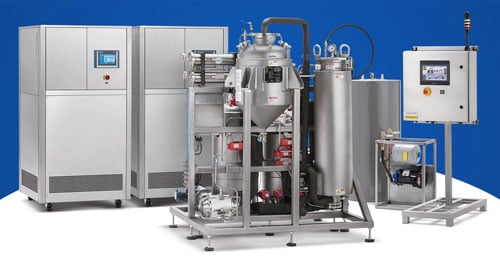Master the Art of Cannabis Extraction with These 5 Methods for Maximum Profit and Marketability
Cannabis extraction is the process of separating cannabinoids and other compounds from the plant material, resulting in highly concentrated and potent extracts that can be used in a variety of applications. There are several methods of cannabis extraction available, each with its advantages and disadvantages. Choosing the best approach depends on various factors, including the type of cannabis material, the desired outcome, and the available resources. This article will explore five different cannabis extraction methods, including their benefits, drawbacks, and potential risks. Whether you're a cannabis enthusiast or an extractor tech, understanding the various extraction methods can help you make informed decisions about how to produce high-quality extracts.

CO2 Extraction: This method is popular in the cannabis industry because it produces high-quality extracts with a high concentration of cannabinoids and terpenes. Additionally, CO2 extraction is a highly controllable method that allows extractors to fine-tune the process to create different types of extracts with specific flavors and chemical profiles.

Ethanol Extraction: While ethanol extraction is generally considered safe, it may not be as efficient as other methods for preserving terpenes and other delicate compounds. However, ethanol extracts can still be highly potent and flavorful, and some extractors favor the technique due to its low cost and simplicity.

BHO Extraction: Despite its potential risks, butane extraction remains popular due to its ability to produce highly potent and flavorful extracts with various finished product options. However, it is crucial to follow proper safety procedures when using this method, as butane is highly flammable and can pose a significant danger if not handled correctly.

Rosin Press Extraction: One advantage of this method is that it can be performed with relatively simple equipment, making it accessible to home extractors. Additionally, rosin press extracts often have a unique texture and flavor profile that can be highly desirable to cannabis enthusiasts.

Ice Water Extraction: This method is highly effective at preserving terpenes and other delicate compounds, resulting in extracts that have a highly nuanced and complex flavor profile. However, it is essential to note that ice water extraction can be labor-intensive and requires specialized equipment.

When it comes to cannabis extraction, the most efficient and versatile method is solvent-based extraction. This method involves using solvents like butane, propane, ethanol, or CO2 to extract the resin from the cannabis plant material, resulting in a wide range of terpene-rich concentrates. Butane Hash Oil (BHO) and Propane Hash Oil (PHO) are great examples of hydrocarbon waxes that are extracted using butane or propane, while CO2 extraction is praised for its ability to preserve the full spectrum of cannabinoids and terpenes. While solventless extraction may seem like a healthier alternative, it limits the range of products that can be made, and the yield is often low. For instance, while rosin products are solventless and free of chemical solvents, they can be more expensive due to the time and skill required to produce them. On the other hand, solvent-based extraction can produce a wide variety of high-quality concentrates that cater to different consumer preferences. So, if you're looking for a reliable and efficient method for cannabis extraction, solvent-based extraction, especially BHO, is the way to go.


